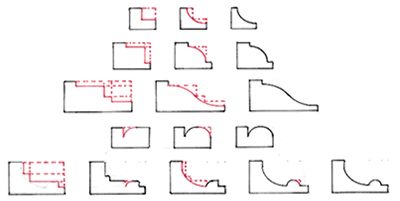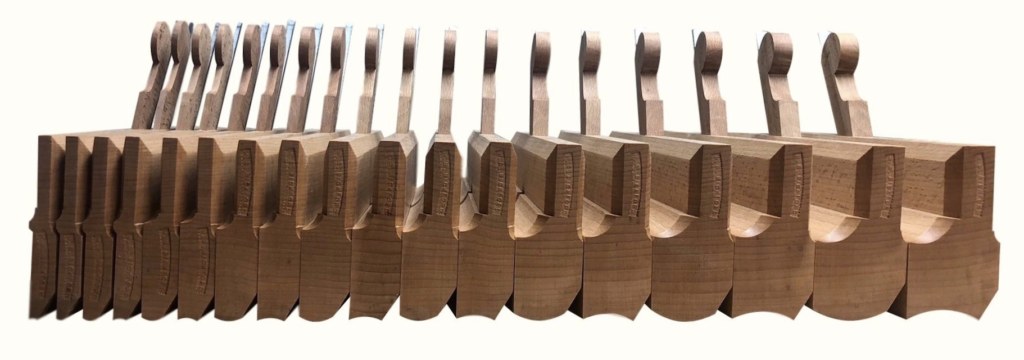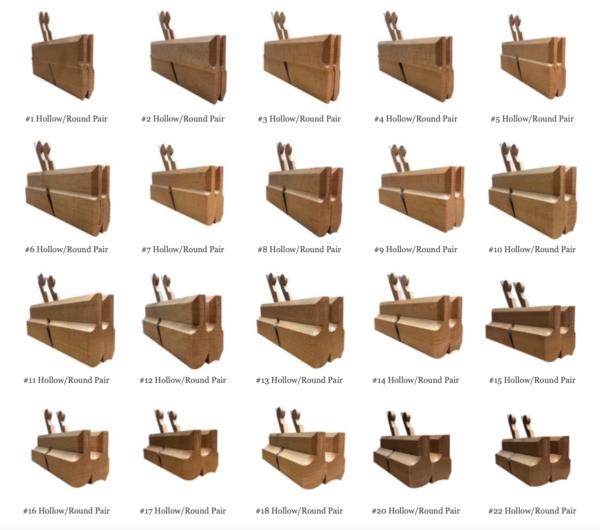Hollows & Rounds
HEY!! Hi everyone. I hope you’re all having a great weekend wherever you are in the world and I wish you all of the best of luck in grabbing any tools you’ve taken a liking to this weekend. And there are some absolutely amazing tools.
As is our normal practice each week to help our group members all around the globe we put up the hyperlink to a countdown clock which will help you keep a track of how long is left in this current auction no matter what time zone you’re in.
However the amazingly knowledgeable and always engaging Sean O’Donnell who normally does the ‘countdown post’ has kindly allowed me to do it this weekend. Sean takes great pride in sharing some incredible facts about vintage tools, their use, design, history etc… every week. So I really hope I don’t let him down with my meagre contribution containing a little bit of history and interest about ‘Hollers n’ Rounds’ taken from the seminal research source ‘Goodman’s British Planemakers - 4th edn’ by Jane Rees.
In the case of hollows and rounds, snipe bills and side rounds the name of the plane is based on a direct description of the plane itself. These planes were amongst the first moulding planes to be developed and were used in conjunction to make complex mouldings (see moulding stages photo below).
For the avoidance of doubt it is worth repeating that a hollow is a plane with an in-curved or hollow sole and a round is outwardly curved. This is certainly the modern usage. But there has been some confusion which could be traced back to Smith’s key (Joseph Smith, Explanation or Key to the Various Manufacturers of Sheffield, reprinted by the Early American Industries Assoc, 1975) which indicates the opposite.
The size of sets has varied and increased with the passage of time.
The Wilson list of 1760 details a 12 pair set of H’s & R’s made as a set by John Ridgus (John Rogers of Westminster)
On the other hand the inventory of tools lost in the Great Fire of Boston also in 1760 lists only 6 rounds and 6 hollers which may have been a ‘half set’ at that time.
In 1771 and 1773 the celebrated furniture maker Richard Gillow of Lancaster lists in his accounts a set of 16 Hollows and Rounds. The famous Seaton chest which contains tools manufactured by Christopher Gabriel & Sons also lists 16 pairs.
Whilst the modern day cost of pairs of matched manufacturers Hollows and Rounds are extremely reasonable the original cost of such tools was significant to craftsmen and therefore sets could be purchased as individual pairs, quarter, half or full sets depending upon the success of the craftsman financially or the complexity and size of mouldings to be produced.
A full set is generally comprised of 16 sets which increase in size from half a quarter of an inch (1/8”) size 1 up to 2 inches size 16. Modern reproduction sets also include additional even sizes 18, 20 and 22 (see photo below of additional pairs).
Consequently the commonly found quarter sets contain.
Set 1 - Sizes 1,3,5,7
Set 2 - Sizes 2,4,6,8
Set 3 - Sizes 9,11,13,15
Set 4 - Sizes 10,12,14,16.
and then correspondingly half sets could be purchased. Commonly they would be odds (sets 1 and 3) and evens (sets 2 and 4). But could equally have been sets 1 and 2 or sets 3 and 4 depending upon the focus of the craftsmen. i.e. a furniture maker may require the smaller half for finer mouldings as opposed to a building joiner who may be required to produce Georgian or Victorian scale complex moulds.
Thanks for getting this far. I just have two more things to do before I wish you all a very good evening and a good week ahead
First, here is the link to the countdown clock….again the very best of luck with your purchases.
https://www.vintagetoolpatch.com/
Secondly (and my apologies it’s not tool related) here is a link to a long dull tale about life for me over the last 12 months, if you get time please take a moment to read the story so far. And today is exactly one year ago today that I emerged from being in a coma for a week….it’s great to still be here chatting with you all. I’ve hit my initial target but this is just the start of trying to save lives for me so any contribution is welcome and will go toward future defibrillator devices. Many thanks
https://www.justgiving.com/crowdfunding/lee-patchell-1



